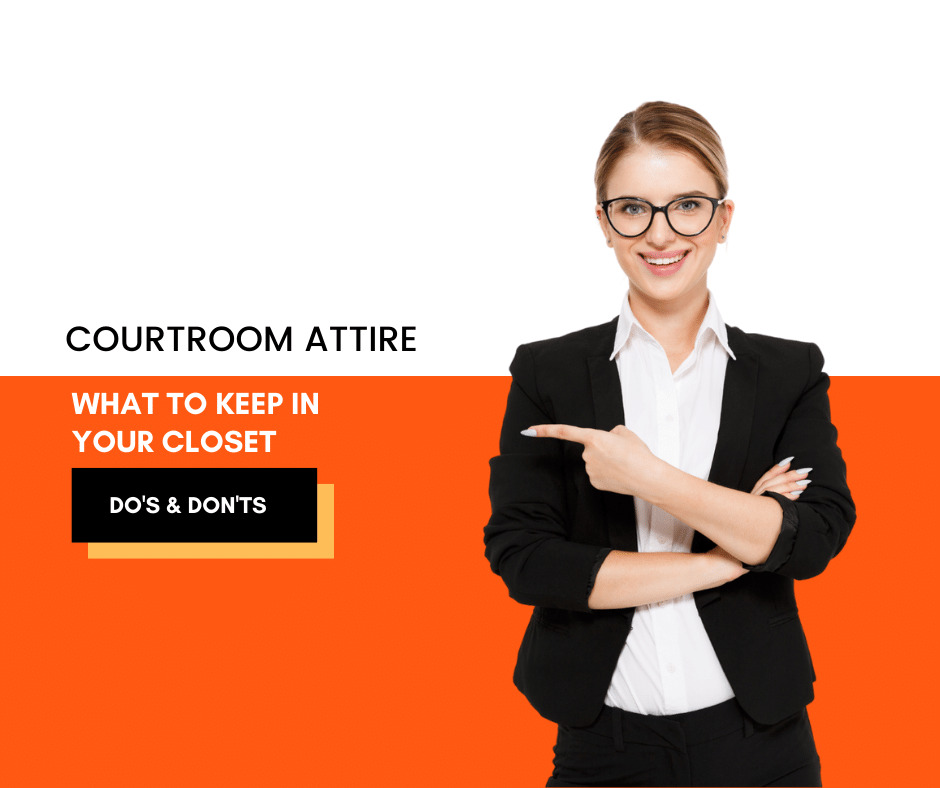The Do’s and Don’ts of Court Attire
Many people who are pursuing a lawsuit after being the victims of a car accident or other personal injury incidences have usually not participate in any legal proceedings and are not familiar with proper court attire etiquette. Well, no need to stress because my 16-plus years in the courtroom have you covered with the “dos and don’ts” for courtroom attire.
First impressions are crucial for any personal interactions especially in court proceedings because what you wear could possibly influence the outcome of the case and how the judge and jury can and might perceive you. It only takes about seven seconds for a first impression to be formed so use clothing to your advantage. The goal is to look appropriate and nonthreatening so as not to distract from the case.
A person’s choice of clothing in the courtroom will sway the judge and jury’s perception of you because judgments about your trustworthiness, intelligence, honesty and morals are all subconsciously based on your appearance and clothing. You may think this is superficial but it’s actually science, we have a very strong reaction to visual stimuli so based on limited impressions were quick to make assumptions based on first impressions and for the next few minutes our brain will look for evidence to support our conclusions. So clothing and appearance hold an important role. So suit up and show out.
Let’s get into the details:
The main rule of thumb is to dress conservatively as if you are going to a religious institution or a job interview. Dressing conservatively also means that the clothing, accessories and appearance should not have the effect to draw too much attention to yourself.
Appearing before the court in a groomed manner is important because it adds to a positive first impression. Before you’re off to court make sure to get a haircut and that your hair is neat and in place, trim excessive facial hair or even opt for a clean-shaven face.
Keep tattoos and body piercings covered up.
Wear professional footwear, absolutely no sandals leave those for the beach.
For the most part, you can double-check the courthouse’s dress code by either calling or looking on their website.
Wear clothing that fits well, makes you look neat and that is comfortable. Research (https://www.psychologytoday.com/intl/blog/do-something-different/201304/what-your-clothes-might-be-saying-about-you) found that people judged a man wearing a well-tailored suit as more confident and successful than a man wearing an off-the-rack suit. The time it took for them to make this conclusion? Three seconds.
For men typically a dark suit like navy blue or charcoal grey is usually advised paired with a pressed white or light blue dress shirt added with a simple tie and belt. This is a traditional choice and has been approved by judges over the years.
For women, there are different options based on your personal style. A modest suit or dress slacks with a nice blouse covering your shoulders are appropriate. Also, a dress or skirt (length preferably to the knees) with a blouse covering your shoulder will also do. Make sure the outfit is not too short, tight, low-cut or trendy.
Here’s a list of what not to wear:
– Bright colors
– Crazy patterns
– Noticeable perfume
– Heavy make up
– Prominent hairstyle
– Flashy jewelry
– Expensive items
– Designer labels
– Sandals
– T-shirts
– Hats
These are a few pointers to keep in mind when you go to court next. Basic solid colors that look conservative along with proper grooming can help you make a good first impression on the judge. Carry yourself with confidence, and you’ll be good to go. Best of luck!
The advice and recommendations, perspectives and context expressed in this article are those of the Marketing Director from Fischetti Law Group’s editorial team, and have not been reviewed or endorsed by our partners.









